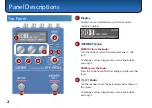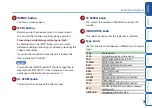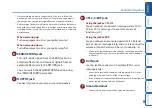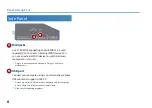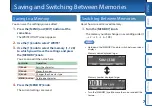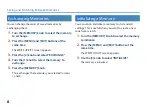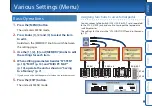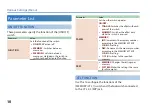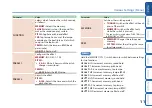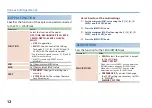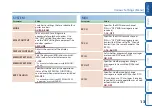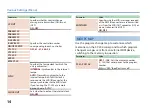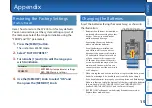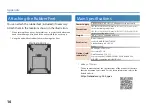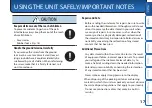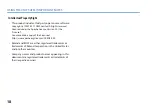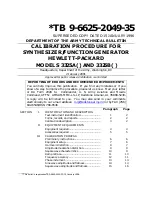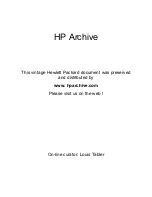
Panel Descriptions
3
4
[MENU] button
The menu screen appears.
5
[EXIT] button
Returns you to the previous screen. In some screens,
this cancels the function currently being executed.
Preventing accidental operation (panel lock)
By holding down the [EXIT] button, you can switch
between enabling (unlocking) or disabling (locking) the
knobs and buttons.
If you use these controls while the unit is locked, the
display indicates “LOCKED.”
MEMO
Press both the [MENU] and [EXIT] buttons together to
display the WRITE UTILITY screen, where you can save,
exchange and initialize the memories (p. 7).
6
[D. LEVEL] knob
This adjusts the volume of the direct sound.
7
[E. LEVEL] knob
This adjusts the volume of the effect sound (synth
sound).
8
[VARIATION] knob
This selects variations for the type that is selected.
9
Type knob
Use this knob to switch between different synth sound
types.
Type
Explanation
LEAD
Suitable for playing solos or leads
PAD
Soft sounds used as sonic fill-ins
STRING
Synth strings sounds
BELL
Sounds with metallic resonance
ORGAN
Organ sounds
BASS
Bass synth sounds
DUAL
Fat sounds
SWEEP
Sounds with a characteristic vibration
NOISE
Noise sounds
SFX
Sound effects and distinctive sounds
SEQ
Sounds whose pitch or character changes
rhythmically
ARPEGGIO
Arpeggio phrases that play


